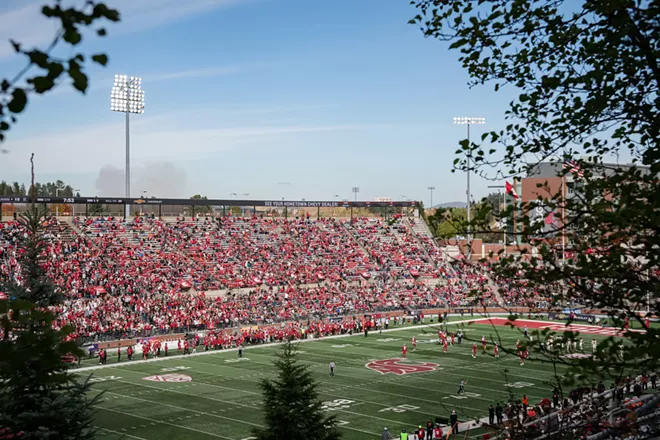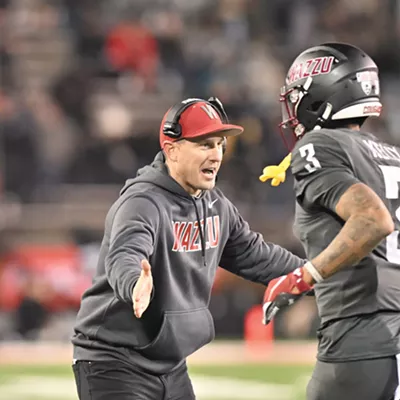College football fans are pretty used to bad news at this point. But it sure seems like the sport could be heading over a cliff.
The past couple decades have seen teams changing conferences right and left, and many longtime rivalry games have fallen by the wayside as a result. Bowl games used to be a reward for a remarkable season, and now there are so many they're like participation trophies. Players can transfer at will from season to season (good for them, not great for fans trying to feel a connection to their favorite team), and coaches quit one job for another no matter the status of their contracts.
Chaos is kind of the norm. But this year things got even crazier. In June, USC and UCLA announced they were jumping from the Pac-12 conference to the Big Ten in 2024. And while that should just feel like another change all about money that we've seen previously, there's something different about this one. And it doesn't feel good.
When Oklahoma and Texas announced last summer that they'd be leaving the Big 12 for the SEC, that made some sense, at least geographically. Texas A&M made a similar move a couple years back, and Texas and Oklahoma are kind of close to that school. But USC and UCLA are literally going to be in the same conference as Rutgers, located in New Jersey, which, from what I hear, has a nice boardwalk right on the Atlantic Ocean. USC and Rutgers are literally a whole country apart, but thanks to shared TV revenues, they'll be forever joined. Or at least joined until the next, better deal comes along for one of the schools to jump ship to some future SupaDupaConference.
The Pac-12 partly has itself to blame for losing two of its signature schools (and the entire Los Angeles TV and recruiting market in the process). Their conference TV network never gained much traction, and schools that are always in debt thanks to their overspending athletic departments no doubt looked with much envy at the teams in the Big Ten and SEC getting paid reportedly four times what the Pac-12 schools get from their various TV deals.
Sure, it'll be neat for UCLA to go play a game at Michigan's "Big House" or Wisconsin's Camp Randall Stadium, but mostly it'll be awesome to get a check for $100 million a year instead of $25 million. That difference will pay for a lot of non-football teams to take red eye flights to play volleyball or basketball or tennis across the country from their LA home.
So what happens to what we're still calling the Pac-12?
The conference could simply add a couple teams like San Diego State and Fresno State and try to make it work with the teams that are left. Those aren't exactly sexy additions that will get ESPN or Fox to pony up more money in the next TV deal.
The so-called "conference of champions" could also completely splinter, with every school trying to latch on to its best potential deal. For Washington and Oregon, Arizona and Arizona State, that might not be a bad option, as they bring big-money donors and decent-sized TV markets with them. Even Utah and Colorado might have appeal to other conferences given their current and past successes on the gridiron.
If that splintering does happen, though, schools like Washington State and Oregon State could find themselves adrift, just hoping to latch on to some conference considerably lower in esteem than the Pac-12.
Could we be looking at a scenario in which Washington State decides to embrace its regional competitors and go down to, say, Big Sky size? Could we suddenly be looking at a conference that includes the Cougs alongside Idaho, Eastern Washington and the Montana schools? It sure would make for easier road trips to watch road games.
Considering what USC and UCLA are doing, anything is possible down the line. In the meantime, enjoy the last couple years of what we now think of as the Pac-12, because it's never coming back. ♦
























